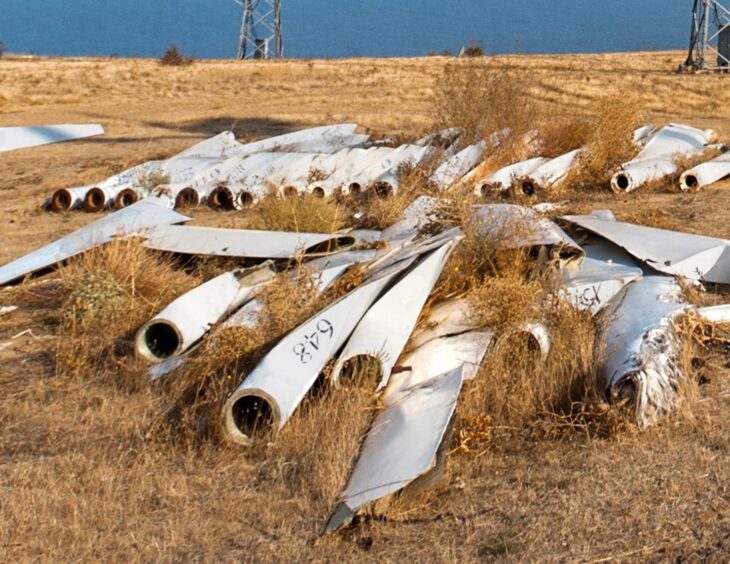
Danish start-up Continuum has developed a world-first method of recycling wind turbine blades into composite building materials, and the company could potentially base its first factory in Scotland.
The “infinitely recyclable” composite panels developed by Continuum have the potential to be used in home construction.
The panels are so strong the company is even investigating potential uses for bullet-proofing.
Developed by co-founder and chief technical officer Reinhard Kessing, the patented technology can process wind turbine blades up to 22 metres in length and 3.6 metres wide.
Mr Kessing said the manufacturing method is a “totally environmentally friendly, dry process”.
Continuum said the fully automated factories are designed to run on 100% green energy and are zero carbon emitting environments; meaning no emissions to air, no waste fluids to ground, and no carbon fuel combustion.
The turbine blades are first put through a “densifier” and then a “crusher”, which creates pizza shaped chunks that are about four inches thick.
From there, the pieces are put through a “hammer mill” which reduces them to about the size of a large orange.
These smaller pieces are then fed through an optical and inductive sorting machine to remove any embedded carbon fibre, which is sold separately onto the second-hand market.
Further metals, debris and contamination are also removed in the advanced facility, which can even remove lead from older wind turbines using a gravity processor.
Once the sorting process is complete, the remaining raw materials are stored on site ready to be blended with a resin to create the composite.
Mr Kessing has been developing the technology for over 20 years, initially using it in factories in Ghana and the United States to recycle wooden panels and automotive interior parts into composite panels.
“I did what people said cannot be recycled,” he said.
“I started with the interior of automotive dashboards, headliners, door panels; a real wide array of things.”
Building on that initial success, attention has now turned to the looming challenge of recycling the world’s wind turbines as they reach their end-of-life.
The company is in advanced discussions with potential investors and hopes to finalise plans for its first factory by the end of 2024.
While the company had initially settled on the Port of Esbjerg in Denmark as the site for its first factory, Continuum chief operating officer Martin Dronfield said the company was increasingly considering potential locations in Scotland including Dundee, Rosyth and Cockenzie.
“We now have a straight race between the two locations, if I’m honest, and it’s linked to investment,” Mr Dronfield told Energy Voice.
Continuum is planning to make a final investment decision towards the end of 2024.
In addition, the company is also engaged in advanced discussions on opening a facility in China.
Following on from its plans for factories in Denmark, Scotland and China, Continuum’s vision is to open additional facilities throughout Europe by 2030 to cater for the forecast growth of offshore wind.
“We’ve carried out probably the most detailed and granular study into where all of the turbine blades are coming from over the next 28 years out to 2040,” Mr Dronfield said.
“Our study shows 2.2 million tonnes of end-of-life wind blades in Europe by 2040.”
Mr Dronfield said initially, blades will be sourced primarily from the decommissioning of onshore wind farms, particularly in mainland Europe.
“Then from early 2030 to moving through to the middle of the next decade, increasingly we see offshore wind farms being decommissioned and increasingly we will source offshore wind blades from developers,” he said.
“And the reason we’re looking at ports for the location of the factory is for that very reason.
“So that we’re able to bring large wind turbine blades directly from offshore to the factory.”
Continuum received a £500,000 grant from the UK Offshore Wind Growth Partnership (OWGP) in 2022, and Mr Dronfield said the grant had been a major boost.
“When we applied for the grant, we only had a factory in Esbjerg in mind, and that grant has helped us accelerate our plans in the UK,” he said.
“It’s been incredibly successful; we simply would not be here today had it not been for that OWGP grant.
“And the very fact that we are now in a race to build the first factory potentially in the UK and potentially in Scotland, is testament to that grant.”

 © Supplied by Continuum
© Supplied by Continuum